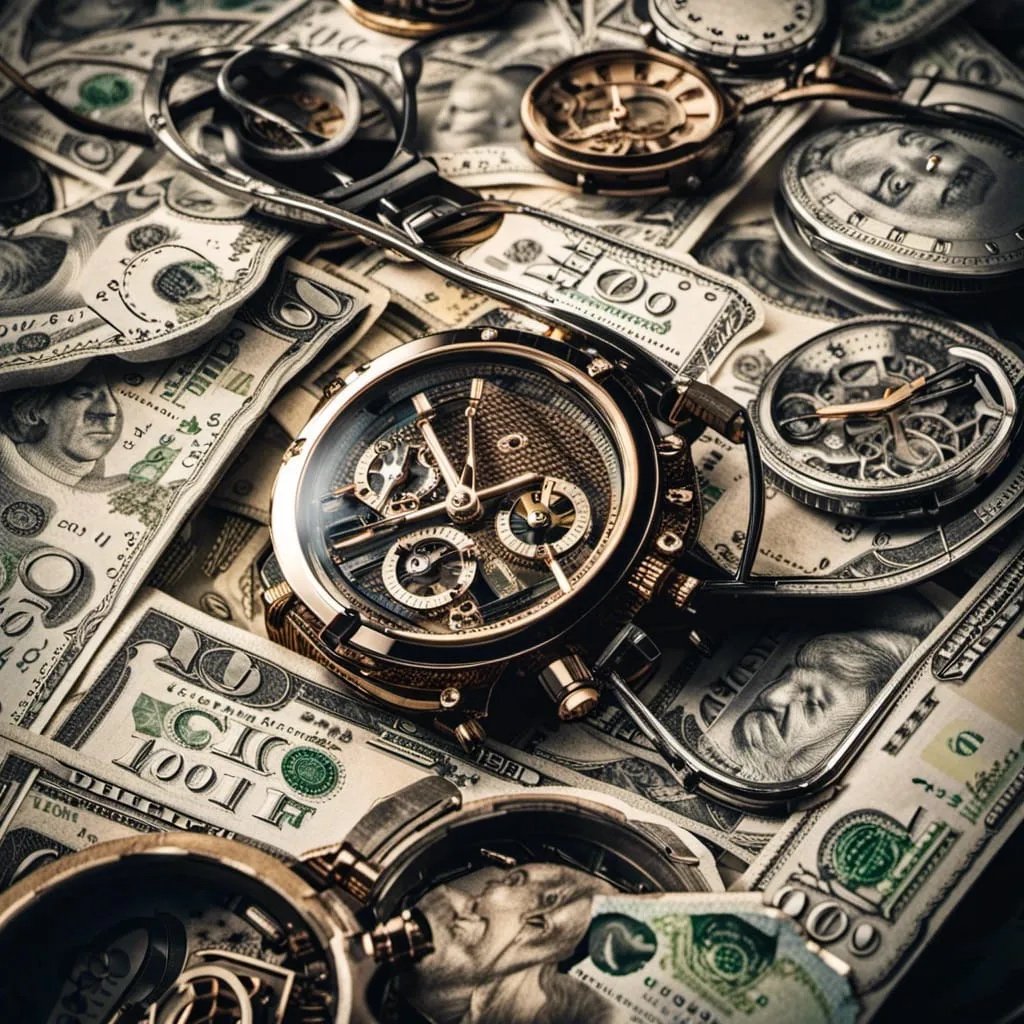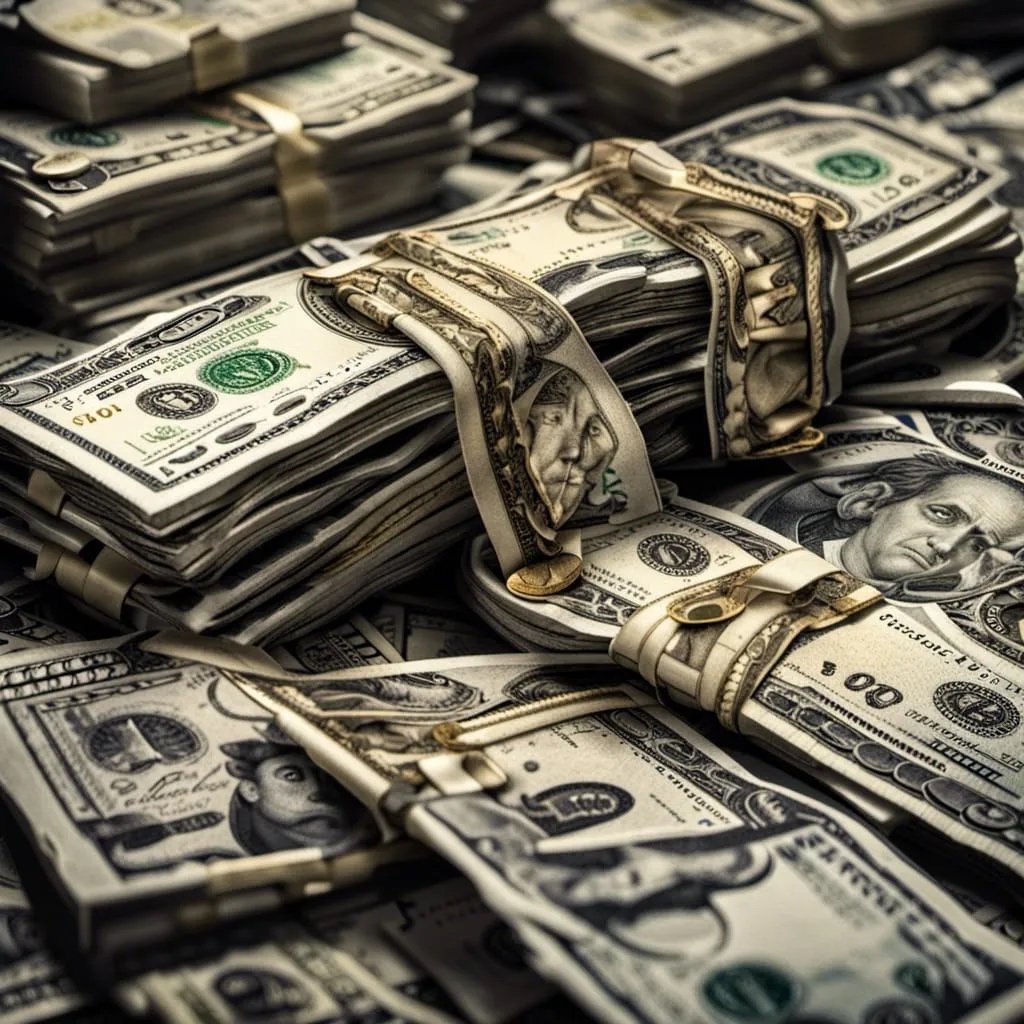Money laundering is a complex and illicit process through which illegally obtained funds are made to appear legitimate by passing them through a series of transactions. The goal of money laundering is to obscure the origins of the funds, making it difficult for authorities to trace their source. This process enables criminals to enjoy the financial gains of their illegal activities without raising suspicion. Additionally, governments have set limits on how much currency or monetary instruments can be taken across borders from one country to another. Nowadays, luxury watches should be considered monetary instruments as some of them are worth millions of US Dollars and it is very easy to cross borders without any implications. Additionally, I will explain how watch auctions can be used for money launder.
How Money Laundering Works
Here, I will explain the stages of money laundering and how luxury watches are being used in the process.
Placement: The initial stage of money laundering involves introducing "dirty money" into the legitimate financial system. This can be done by depositing cash into banks —which with today’s regulations seems almost impossible, purchasing assets such as luxury watches, or using the funds for seemingly legitimate transactions. The intention is to distance the illegal proceeds from their source.
Layering: In this stage, the illicit funds are moved through a series of complex transactions, often across multiple accounts and jurisdictions. The purpose is to create confusion and complexity, making it challenging for law enforcement to trace the money back to its criminal origin. Transactions might include wire transfers, investments, buying and selling assets, and more.
When it comes to luxury watches, all it takes is for criminals to wear several watches or transport them in watch travel cases from one country to another. Just imagine wearing two Richard Mille watches worth one million dollars each and wearing them at the same time —one on each wrist. While most countries won’t even ask any questions, the Swiss borders are typically very strict as to what’s been brought in when it comes to timepieces.
Integration: At this point, the "cleaned" money is reintroduced into the legitimate economy. It may be used to purchase real estate, luxury goods, luxury watches., businesses, or invested in legal financial instruments. These activities give the appearance of lawful income, effectively disguising the illicit origins of the funds.
Methods of Money Laundering
Shell Companies: Criminals create fake companies that seem legitimate on paper but exist only as a means to move money and obscure ownership. The recent boom in the grey dealer watch market has been fueled by this practice. Many grey dealers that are new to the market have capitalized on this practice.
Offshore Accounts: Criminals utilize jurisdictions with lax financial regulations to hide their assets and identities. Today, it is very easy to transport a very large of luxury watches between countries without any issues.
Trade-Based Laundering: Criminals manipulate the value of goods or services in international trade transactions to move money across borders. By inflating the price of luxury watches above their retail level, criminals can launder large sums of money.
Virtual Currencies: Cryptocurrencies are sometimes used to launder money due to their pseudonymous nature and potential lack of oversight. Many grey dealers in the watch market accept cryptocurrencies as a form of payment for luxury watches.
Money laundering is a complex and pervasive criminal activity that involves disguising the origins of illegally obtained funds through a series of transactions. It has far-reaching negative effects on economies and societies, which is why governments and law enforcement agencies remain dedicated to preventing and combating this illicit practice. The current state of the luxury watch market and with watch theft on the rise, the ability to launder money through watches has hit an ultimate high.
How Watch Auctions Could be Used for Money Laundering
Watch auctions have, unfortunately, been exploited as a potential avenue for money laundering due to their characteristics that can be manipulated by individuals seeking to legitimize illegally obtained funds. Money laundering through watch auctions involves using the sale and purchase of valuable timepieces to obscure the origin of illicit funds, making them appear as if they came from legitimate sources. While this practice is not representative of all watch auctions or certain auction houses, it's important to be aware of the potential risks and challenges.
Here's how money laundering can occur through watch auctions:
Value Disparity: High-end watches often have subjective and fluctuating values. Criminals can exploit this by inflating the perceived value of a watch, using it to justify the introduction of large sums of illicit money into the auction process.
Fictitious Bidders: Criminals may create fictitious bidders or use associates to place bids on watches they are selling. This artificially raises the final bid prices, making it appear as though legitimate buyers are interested in the items.
Overpayment: Criminals might intentionally overpay for watches using illicit funds. The excess payment can then be refunded to them or to other accounts, making the money appear to be "cleaned" through the legitimate auction process.
Layering: As part of the money laundering process, criminals may engage in multiple transactions involving different watches, making it difficult for authorities to trace the source of the funds. Watches might be bought, sold, and exchanged among various parties in complex patterns.
Complex Transactions: Criminals may use watch auctions to create complex transactions involving multiple buyers, sellers, and intermediaries. This can add an additional layer of obscurity to the origin of the funds.
To counter these challenges and potential risks, many legitimate auction houses and regulators take steps to prevent money laundering in watch auctions:
Due Diligence: Reputable auction houses conduct due diligence on their clients, requiring them to provide identification and financial information to ensure transparency and legitimacy.
Transaction Reporting: Auction houses are often required to report large transactions to regulatory authorities, helping to identify potentially suspicious activities.
Expert Valuation: Auction houses typically have experts who assess the value of watches accurately to prevent inflating prices artificially.
Transaction Monitoring: Auction houses may monitor bidding patterns and transaction histories to identify unusual or suspicious behavior.
Industry Collaboration: Watch industry associations and regulatory bodies collaborate to share information and best practices for preventing money laundering in watch auctions.
Education and Training: Auction house employees and staff are trained to recognize potential signs of money laundering and report any suspicious activities.
It's important to note that while money laundering through watch auctions is a concern, many legitimate and well-regulated auction houses work diligently to prevent these activities. For those participating in watch auctions, it's essential to be aware of the risks, choose reputable auction houses, and exercise caution when engaging in high-value transactions.
Always do your due diligence and buy the seller in this case the grey dealer selling you a watch. There is a large amount of very reputable grey dealers out there that are not engaging in criminal activities. Always do your homework.
Perhaps new watch dealers should be sanctioned in a way where it is always transparent where the watches and the funds for the watches are coming from.
Do you think that the IRS should start tracking and making sure that taxpayers report the value and ownership of luxury watches as financial assets throughout their lifecycle?
Just some food for thought for sure.



















